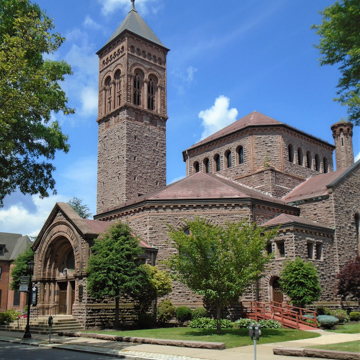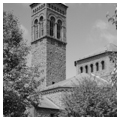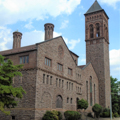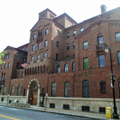A frequent designer of Presbyterian churches, Cady designed those in Wilkes-Barre and Scranton at the same time and in a similar Richardsonian Romanesque manner, an example of the constant architectural competition between the two cities, which benefited New York City architects such as Cady. The Wilkes-Barre church is a model of elegance, consisting of little more than a polygonal auditorium anchored by its superb corner tower. The Laurel Run redstone exterior hides a steel frame, a novelty sufficiently noteworthy to feature prominently in contemporary accounts of its construction. Diagonally across the street at 40 W. Northampton Street is the
You are here
First Presbyterian Church
1889, J. C. Cady; 1927 church house, Thomas H. Atherton and Thomas A. Foster. 97 S. Franklin St.
If SAH Archipedia has been useful to you, please consider supporting it.
SAH Archipedia tells the story of the United States through its buildings, landscapes, and cities. This freely available resource empowers the public with authoritative knowledge that deepens their understanding and appreciation of the built environment. But the Society of Architectural Historians, which created SAH Archipedia with University of Virginia Press, needs your support to maintain the high-caliber research, writing, photography, cartography, editing, design, and programming that make SAH Archipedia a trusted online resource available to all who value the history of place, heritage tourism, and learning.














